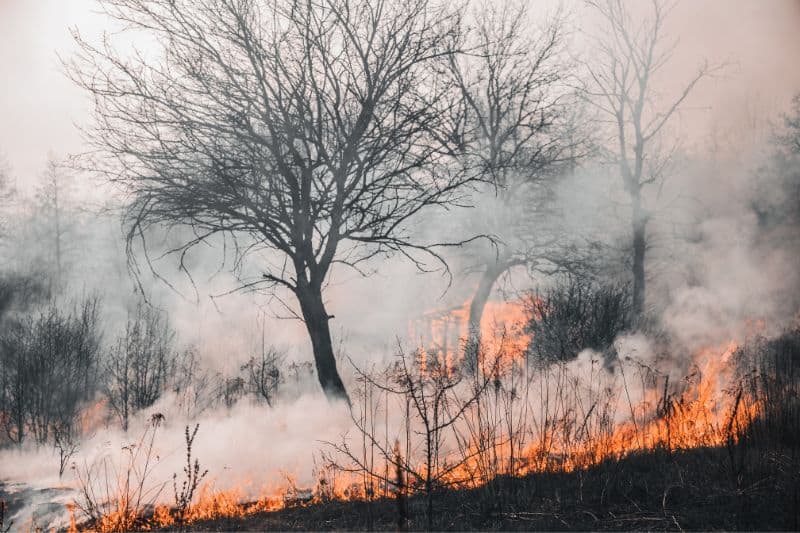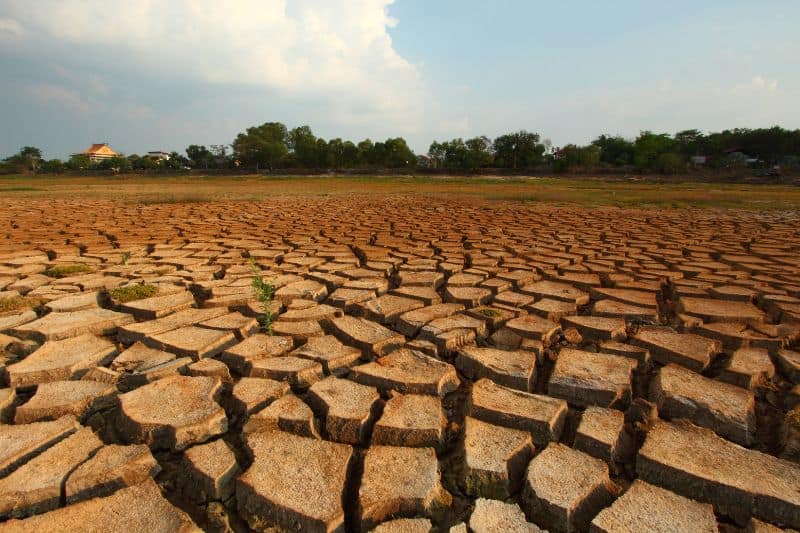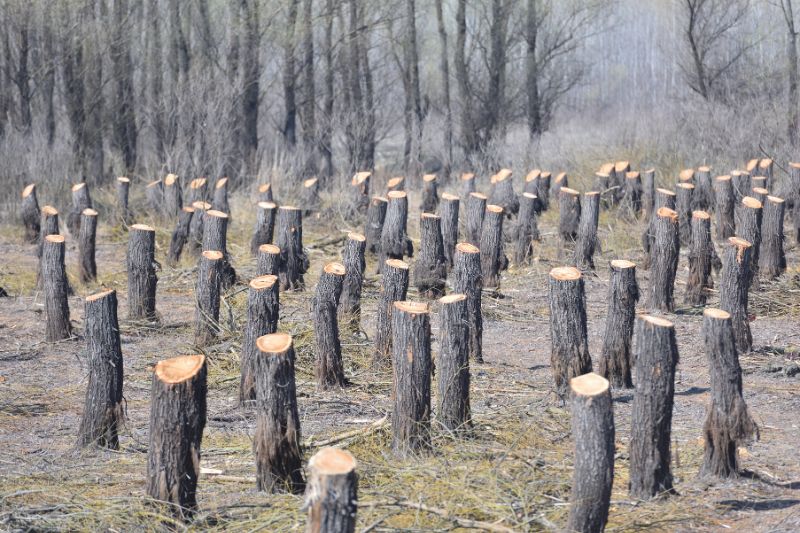Imagine one-day awakening to find that everything you have ever known has abruptly changed. The house you’ve been familiar with all of your life has disappeared; the roads are very different and much trickier to navigate; you’re in a place you don’t know; there are things all about you that might easily hurt you; and scariest of all, there’s no way out!
One of the main problems affecting ecosystems worldwide is habitat fragmentation, which is the division of large, interconnected habitats into smaller, distinct regions. Human activities like deforestation, infrastructural development, urbanization, and agricultural growth are the main drivers of this process.
Read: How Does Biodiversity Contribute to the Sustainability of an Ecosystem?
What is Habitat Fragmentation?
When portions of habitat are wiped out, smaller, disconnected regions remain behind, causing habitat fragmentation. While natural events like fires or volcanic eruptions might cause this, human action is usually to blame.
Habitat fragmentation happens when the terrain is changed in an approach that baffles the animals and interferes with their ability to live a natural life. When we build highways and attractions in the middle of forests and other natural regions, we cause habitat loss.
Even while habitats aren’t destroyed, habitat fragmentation nonetheless destabilizes the environment. Animals may become isolated from each other and their supply of food due to fragmentation, which might hinder their ability to survive.
This kind of habitat loss occurs on land as well as in water. Underneath the water, artificial features like dams often act as barriers between species, making it more challenging for them to find partners and find food. Disparaging ecosystems negates the benefit of migration for the multitude of creatures whose survival depends on it.
A further consequence of fragmentation is the “edge effect.” Certain species, such as some mosses and lichens, prefer moist, shaded environments. A shrinking section of forest may expose them to excessive sunlight or dry winds, causing them to vanish.
The most comprehensive home range of an organism will be supported by a forest that is in good health. These are typically the top predators, and fragmentation can seriously harm them. The ecology can be severely disrupted if they vanish since they frequently have a crucial role in controlling the numbers of other organisms.

Causes of Habitat Fragmentation
Several naturally occurring and artificial factors can cause habitat fragmentation, which divides and diminishes continuous environments. Roads, urbanization, and agricultural practices are the main things that divide natural regions. Wildlife is frequently severely impacted by this.
Given that habitat loss causes wildlife deaths and adverse environmental effects, one would reasonably wonder why we persist in practices that threaten biodiversity.
Agricultural Activity
In contrast to earlier times, when farms were small-scale operations managed by local communities and families, farming is now a large industry that multinational companies can handle.
Nowadays, agriculture produces food in large quantities that can be swiftly and profitably marketed. More land must be cleared to make more food, which requires more area to be cleared.
Business
Businesses and major corporations are destroying a lot of the environment. To grow and expand, these companies need more and more land. Numerous firms and enterprises have been sacrificed for business, standing where wild creatures and natural ecosystems once were.
One well-known instance is palm oil. Palm oil farms are built throughout the tropics to meet the demand. Food items, cosmetics, laundry powders, and biofuels are all made with palm oil.
Human Causes
Fragmentation of habitat is a common human cause. When people clear natural areas, this occurs. This is done to create room for farming, the construction of homes, and the construction of hydropower reservoirs.
As a result, a large, intact environment fragments into smaller ones. Following their clearance of these places, you’re left with little natural islands divided by farms, open spaces, or undeveloped territory. This barren area is occasionally the result of tropical forest slash-and-burn farming.
Natural Causes
The fossil record contains evidence of habitat destruction caused by natural events such as fires, volcanoes, and climate change. For instance, the disintegration of the European rainforest approximately 300 million years ago caused numerous issues for amphibians. However, as the temperature grew drier, additional varieties of reptiles appeared during the same period.
Human Residence
Most natural ecosystems are frequently destroyed to make room for homes for people. The land is cleared for significant buildings and more profitable attractions. However, natural ecosystems are sometimes destroyed so that people can live there. To employ their materials to create comfortable things for humans, they are also destroyed.

Effects of Habitat Fragmentation
The multiple impacts of habitat fragmentation may significantly impact the resilience and efficiency of ecosystems. To counteract the adverse effects on ecosystem and biodiversity functioning, conservation activities must be directed at habitat restoration, wildlife corridor creation, and adopting sustainable land-use practices.
Increased Stress on Wildlife
A level surface must be guaranteed while preparing land for residences and other structures to maintain stability throughout the building process. To accomplish this, bulldozers frequently remove trees and level the ground in forest areas.
Unfortunately, animals don’t have time to adjust to such significant changes in their surroundings because they happen so quickly.
Impoverishes Soil Quality
When analyzing the effects of habitat loss, we also need to consider the ground. Due to the rapid changes in soil composition and quality that deprive plants of the nutrients and space they require to thrive, many plants can no longer flourish.
In addition, many plants cannot force themselves to develop because of how tightly human technology has packed the soil; if seeds are not distributed elsewhere, the plant kind may become extinct entirely.
Unbalance the Ecosystem
Nature uses ecosystems to maintain a balance between various species and their surroundings. In the wild, everything is intertwined, and life is instinctual. Everything has a function, even the highest trees and grass blades. Animals depend on the earth and one another for survival.
They frequently become disoriented and bewildered when we upset this equilibrium, putting them in danger. The eventual outcome is death and the incapacity to procreate and maintain the species.
Expose Wildlife to Unpleasant Conditions
Animals stockpile food and water to survive hard times or when seasonal fluctuations prevent them from accessing their usual food source. Natural shelters are similar to human dwellings in bad weather, providing refuge from storms, torrential rain, and intense heat.
Their displacement disrupts the entire manner of life of wildlife. Many animals depend on their environments as safe havens from raptors. In addition, young animals in the wild need a variety of care; they need to be taught the skills necessary for gathering and hunting food, as well as protected from enemies during their most vulnerable phases.
Loss of Natural Landscape
The land is leveled to create homes, buildings, and other structures. Trees and land are leveled with the assistance of bulldozers. Animals cannot adjust to these significant changes promptly due to the rapidity of this process. Endangered environments are the most common natural landscapes that are altered for human purposes.

Solutions to Habitat Fragmentation
The preservation, reconnection, and management of fragmented ecosystems necessitate a multimodal approach to addressing habitat fragmentation. Notwithstanding the negative consequences of habitat fragmentation, there are numerous strategies we can employ to address this issue.
Develop Regulations to Protect Natural Habitat
Regulation is just as significant. Plans and rules should be established to allow for the legal modification of a specific region for human benefit. For biodiversity, we may give species more time for growth and more areas to remain unaltered by exercising greater control.
Understanding the Significance of Natural Resources
Protecting natural resources and understanding how to utilize them in a way that doesn’t need the regular destruction of habitats are two ways we can fight habitat loss.
Create More Awareness
Raising awareness is a necessary step in addition to education. Whenever the chance to safely record the procedure of habitat loss presents itself, observers ought to make it their mission to support reporting specialists.
The terrible situations that environmental degradation can lead to are better illustrated by images and videos, which elicit strong feelings in viewers and motivate them to safeguard natural areas.
Habitat Restoration
Not only should efforts to conserve habitat focus on minimizing the use of natural resources, but habitats that have been degraded need also be restored. Rebuilding those places, managing them continuously, and protecting them are the steps that lead to habitat restoration.
Signs indicating “marine protected area” may occasionally be seen; preservation organizations typically restore these areas. When visiting those regions, you should care more for the surrounding environment. This endeavor aims to restore biotic and abiotic variables to their pre-human state.
Read: What Effect Do Keystone Species Have on an Ecosystem?
Rebuild Habitats
Humans can damage natural ecosystems at a rate that should match our willingness to rehabilitate and try to replace what has been lost. If specific habitats are unsalvageable, we can help finance the establishment of other regions that will act as a haven for displaced wildlife.
These safe havens resemble the natural environments where healthy living is possible for animals and plants without fear of destruction. Environmentalists worldwide have worked to establish these sanctuaries to prevent the extinction of certain species.
Conclusion
The issue of habitat fragmentation is severe and has repercussions for ecosystems, human welfare, and biodiversity. Natural landscapes worldwide are still being disrupted by their causes, which are human activities, including infrastructure development, urbanization, and agricultural growth.
We can guarantee a sustainable future for the environment and humans by recognizing the intricate dynamics of habitat fragmentation and accepting our shared duty to protect and restore habitats. We can also protect biodiversity and ecosystem resilience.






